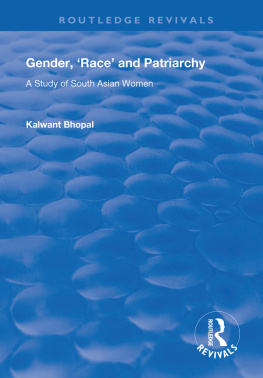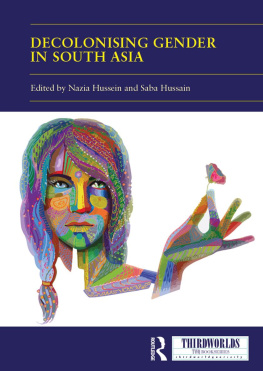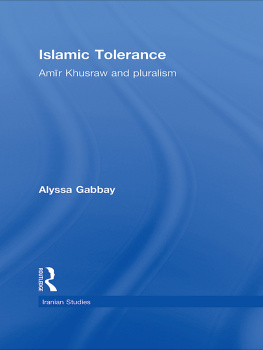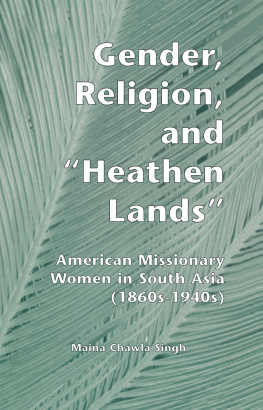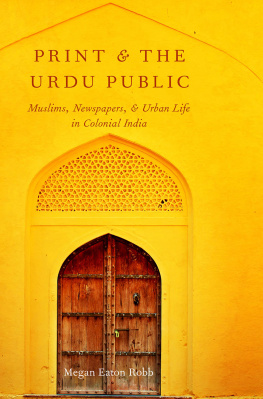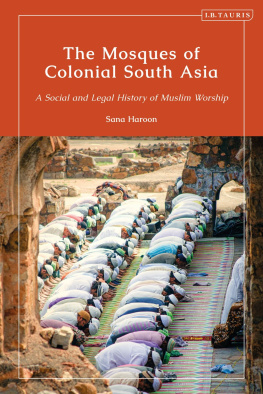SOUTH ASIA IN MOTION
EDITOR
Thomas Blom Hansen
EDITORIAL BOARD
Sanjib Baruah
Anne Blackburn
Satish Despande
Faisal Devji
Christophe Jaffrelot
Naveeda Khan
Stacey Leigh Pigg
Mrinalini Sinha
Ravi Vasudevan
SIOBHAN LAMBERT-HURLEY
ELUSIVE LIVES
Gender, Autobiography, and the Self in Muslim South Asia
STANFORD UNIVERSITY PRESS
STANFORD, CALIFORNIA
Stanford University Press
Stanford, California
2018 by the Board of Trustees of the Leland Stanford Junior University.
All rights reserved.
No part of this book may be reproduced or transmitted in any form or by any means, electronic or mechanical, including photocopying and recording, or in any information storage or retrieval system without the prior written permission of Stanford University Press.
Printed in the United States of America on acid-free, archival-quality paper
Library of Congress Cataloging-in-Publication Data
Names: Lambert-Hurley, Siobhan, author.
Title: Elusive lives : gender, autobiography, and the self in Muslim South Asia / Siobhan Lambert-Hurley.
Description: Stanford, California : Stanford University Press, 2018. | Includes bibliographical references and index.
Identifiers: LCCN 2017054457| ISBN 9781503604803 (cloth : alk. paper) | ISBN 9781503606517 (pbk. : alk. paper) | ISBN 9781503606524 (ebook)
Subjects: LCSH: AutobiographyWomen authors. | AutobiographyMuslim authors. | Muslim women authorsSouth AsiaBiographyHistory and criticism. | Women authors, South AsianBiographyHistory and criticism. | South Asian literatureHistory and criticism. | Women in literature. | Self in literature.
Classification: LCC CT25 .L265 2018 | DDC 920.72dc23
LC record available at https://lccn.loc.gov/2017054457
Cover design: Rob Ehle
Cover image: Page from handwritten memoir of Safia Jabir Ali.
Typeset by Bruce Lundquist in 10.75/15 Adobe Caslon Pro
For Finn and Tess
CONTENTS
A NOTE ON TRANSLITERATION
This book considers autobiographical writing in a wide range of South Asian languages, including Urdu, Hindi, Bengali, Gujarati, Marathi, Punjabi, and Malayalam. It has proved difficult to be systematic in transliteration, but I have tried to follow some basic rules. Diacritical marks are largely omitted from the body of the text with the exception of the ain () and the hamza (). They are sometimes used, however, to make a point about pronunciation or to reflect their usage in an English title or analysis of a text. Similarly, the Persian izafat is generally denoted by -i-(as in Zamana-i-Tahsil), even after a vowel where yi is often used, and the Arabic definite article, al-, as it would be pronounced (as in Rauzat ur-Riyahin). But these rules have been relaxed where a personal name or book title is used prominently or often in English translation with a different spelling. My guide for transliteration has been John T. Platts, Dictionary of Urd, Classical Hind, and English, on the basis that I have always used it when translating texts from Urdu. I retain English spellings for most Indian place-names in reflection of how they were used at the time (hence, Bombay and Calcutta appear more often than Mumbai and Kolkata). On the whole, words from South Asian languages have been denoted by italics, unless they are used frequently (as in the case of purdah).
INTRODUCTION
THE ULTIMATE UNVEILING
I was born in the time of British rule, began Jobeda Khanam. Then, King George V was ruling. Her home was the small town of Kushtia, then in the Nadia district of central Bengal in eastern India. Her grandfather, a respected pir, stopped evening prayers at the neighborhood mosque to announce the birthbut did the childs piercing cry come from a boy or a girl? Dark clouds and pouring rain proved an ill omen: when people came to know it was a girl, there was no trace of happiness left on their faces. Some women commented, Oh God, this girl has brought such a storm, God only knows what is in store for her.
Jobeda Khanams childhood experiences, captured in the early pages of her autobiography, point to specific cultural conventions in South Asia, often encapsulated by the catch-all purdah, by which men may exert their authority to constrain womens mobility and expression. Muslim women in particular are understood to be bound by elaborate codes of modesty defined by sharam and izzat, shame and modesty, that inhibit any form of public articulation.
And thus we are brought to this book. To continue the feminist project of decoding a gendered self, it focuses on autobiographical writings by South Asian Muslim womenwomen, like Jobeda Khanam, who refused to respect the taboo against women speaking out and instead told their life stories in the form of written autobiography.
As a timeline for autobiographical production, my evidence compares favorably with that observed for South Asia as a whole and the Muslim community more specifically. The elaboration of life-history forms from the Middle East and Central Asia (sira, tazkira, hayat) is recognized in the autobiographies produced by Mughal emperors and Islamic scholarsI think of Zahiruddin Muhammad Baburs Vaqai (Events) and Mir Muhammad Taqis Zikr (Remembrance), for examplefrom the sixteenth century on. No doubt these early works provided autobiographical models for later South Asian authors, though as I explore in The spread of autobiography mirrored the trajectory of print in the high noon of colonialism.
Many scholars thus characterize autobiographylike the novel and other forms of modern literatureas a colonial legacy. As S. P. Saksena opined in his seminal Indian Autobiographies as early as 1949, self-portrayal is of recent origin in this country and essentially the result of English education. Furthermore, just as manyand more among the early authors in this studyreceived a traditional education at home or attended private Muslim girls schools intended to uphold Islamic values of one sort or another.
Scholarly emphasis on the autobiographies of male nationalist leadersGandhi, Nehru, and otherswould seem to suggest that if not colonialism, it was nationalism that was responsible for autobiography becoming embedded in South Asia. This study is significant in making explicit that link between women, reformism, and autobiography in Muslim South Asia.
I thus argue that the proliferation of Muslim women writing lives was, as Barbara Metcalf observes of hajj narratives, a modern phenomenon: one no doubt influenced by the colonial environment, but without being a European imitation.ment against British rule, Partition, the dissolution of princely states, and, depending on regional context, Indian, Pakistani, and/or Bangladeshi independence. As Khatemanara Begam (born ca. 192324) summarized her lifes historical periodization, writing from Dhaka in 1988:
WeI mean, people of my age grouphave seen all three ages (past, present and future). The first 23/24 years of our lives were under the mighty British colonizers; our youth was spent in a lot of confusion and struggle under Pakistan; and our mature years passed in difficulty as independent citizens of Bangladesh. Today, at the end of my life when I see the past, I see we have crossed many strong waves over many years. We have seen epoch-making political changes. We have gathered many different and strange experiences. With great excitement, I have seen the great changes that have taken place in the field of womens education and her social environment.
I would suggest that a new wave of womens activism from the 1970s accompanied by a growing recognition of womens history in the academy gave value to these womens stories. From that point on, as I highlight in , publishers wanted to publish them in ever greater numbersbecause there was now a market.
Next page

